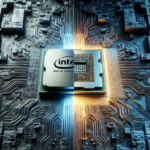How CPUs Contribute to Secure Boot Processes

Introduction
In the modern digital landscape, security is paramount. One of the foundational elements of a secure computing environment is the secure boot process. This process ensures that a computer boots using only software that is trusted by the Original Equipment Manufacturer (OEM). Central Processing Units (CPUs) play a crucial role in this process, providing the necessary hardware support to enforce security policies from the moment the system is powered on. This article delves into how CPUs contribute to secure boot processes, exploring the mechanisms and technologies involved.
Understanding Secure Boot
What is Secure Boot?
Secure Boot is a security standard developed to ensure that a device boots using only software that is trusted by the manufacturer. When a computer starts, it goes through a series of steps to initialize the hardware and load the operating system. Secure Boot helps to prevent unauthorized software and malware from taking control of the system during this critical phase.
Why is Secure Boot Important?
Secure Boot is essential for several reasons:
- Prevents Malware: By ensuring that only trusted software can run during the boot process, Secure Boot helps to prevent malware from taking control of the system.
- Maintains System Integrity: Secure Boot helps to maintain the integrity of the system by preventing unauthorized modifications to the bootloader and other critical components.
- Enhances Trust: Secure Boot enhances user trust in the system by ensuring that it is running genuine software from the manufacturer.
The Role of CPUs in Secure Boot
Hardware Root of Trust
The CPU plays a pivotal role in establishing a hardware root of trust, which is the foundation of the secure boot process. The hardware root of trust is a set of functions in the trusted computing base that is always trusted by the operating system. It provides a secure environment for the execution of critical security functions.
Trusted Platform Module (TPM)
Many modern CPUs integrate a Trusted Platform Module (TPM), a specialized chip designed to secure hardware through integrated cryptographic keys. The TPM is used to store cryptographic keys, passwords, and certificates, and it plays a crucial role in the secure boot process by:
- Storing Secure Boot Keys: The TPM stores the keys used to verify the integrity of the bootloader and other critical components.
- Providing Secure Measurements: The TPM provides secure measurements of the boot process, ensuring that each step is verified before proceeding to the next.
- Enabling Attestation: The TPM enables attestation, allowing the system to prove to external parties that it has booted securely.
Intel Boot Guard and AMD Secure Technology
Leading CPU manufacturers like Intel and AMD have developed their own technologies to support secure boot processes:
- Intel Boot Guard: Intel Boot Guard is a hardware-based technology that helps to protect the system’s pre-boot environment. It ensures that the system boots only with firmware that is signed by the OEM, preventing unauthorized firmware from running.
- AMD Secure Technology: AMD Secure Technology provides a similar level of protection, ensuring that the system boots securely by verifying the integrity of the firmware and other critical components.
Mechanisms of Secure Boot
Firmware Verification
The first step in the secure boot process is the verification of the system firmware. The CPU checks the digital signature of the firmware against a trusted key stored in the TPM. If the signature is valid, the firmware is allowed to execute; otherwise, the boot process is halted.
Bootloader Verification
Once the firmware is verified, the next step is to verify the bootloader. The bootloader is responsible for loading the operating system. The CPU checks the digital signature of the bootloader against a trusted key stored in the TPM. If the signature is valid, the bootloader is allowed to execute; otherwise, the boot process is halted.
Kernel and Driver Verification
After the bootloader is verified, the CPU proceeds to verify the operating system kernel and drivers. The digital signatures of these components are checked against trusted keys stored in the TPM. If the signatures are valid, the components are allowed to execute; otherwise, the boot process is halted.
Challenges and Limitations
Compatibility Issues
One of the main challenges of implementing secure boot is ensuring compatibility with a wide range of hardware and software. Some older hardware and software may not support secure boot, leading to potential compatibility issues.
Key Management
Managing the cryptographic keys used in the secure boot process can be complex. Keys must be securely stored and managed to prevent unauthorized access. Additionally, key revocation and replacement can be challenging, especially in large-scale deployments.
Performance Overhead
The secure boot process can introduce a performance overhead, as each step of the boot process involves cryptographic operations to verify the integrity of the components. While modern CPUs are designed to handle these operations efficiently, there may still be a slight impact on boot times.
Future Trends in Secure Boot
Enhanced Hardware Support
As security threats continue to evolve, CPU manufacturers are likely to enhance hardware support for secure boot processes. This may include the integration of more advanced cryptographic capabilities and improved key management features.
Integration with Other Security Technologies
Future secure boot processes may be more tightly integrated with other security technologies, such as secure enclaves and hardware-based isolation. This integration can provide a more comprehensive security solution, protecting the system from a wider range of threats.
Increased Adoption of Open Standards
There is a growing trend towards the adoption of open standards for secure boot processes. Open standards can help to ensure interoperability between different hardware and software platforms, making it easier to implement secure boot across a wide range of devices.
FAQ
What is the role of the CPU in the secure boot process?
The CPU plays a crucial role in the secure boot process by establishing a hardware root of trust, verifying the integrity of the firmware, bootloader, and operating system components, and providing support for cryptographic operations through integrated technologies like TPM.
How does the Trusted Platform Module (TPM) contribute to secure boot?
The TPM contributes to secure boot by storing cryptographic keys, providing secure measurements of the boot process, and enabling attestation. It ensures that only trusted software can execute during the boot process, preventing unauthorized modifications and malware.
What are Intel Boot Guard and AMD Secure Technology?
Intel Boot Guard and AMD Secure Technology are hardware-based security technologies developed by Intel and AMD, respectively. They help to protect the system’s pre-boot environment by verifying the integrity of the firmware and other critical components, ensuring that the system boots securely.
What are some challenges of implementing secure boot?
Some challenges of implementing secure boot include compatibility issues with older hardware and software, complex key management, and potential performance overhead due to cryptographic operations during the boot process.
What future trends can we expect in secure boot processes?
Future trends in secure boot processes may include enhanced hardware support, tighter integration with other security technologies, and increased adoption of open standards to ensure interoperability between different hardware and software platforms.
Conclusion
CPUs play a vital role in the secure boot process, providing the necessary hardware support to enforce security policies from the moment the system is powered on. By establishing a hardware root of trust, integrating technologies like TPM, and leveraging advanced security features from leading manufacturers, CPUs help to ensure that only trusted software can execute during the boot process. While there are challenges and limitations to implementing secure boot, ongoing advancements in hardware and security technologies promise to enhance the effectiveness and adoption of secure boot processes in the future. As security threats continue to evolve, the importance of secure boot and the role of CPUs in this process will only continue to grow.




